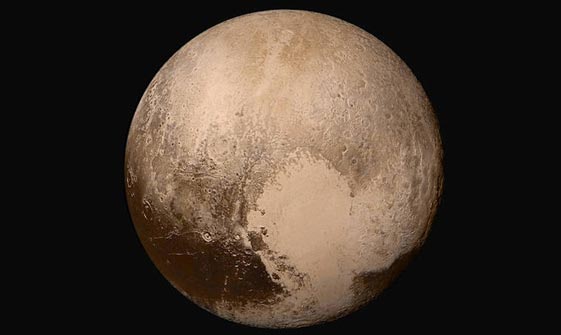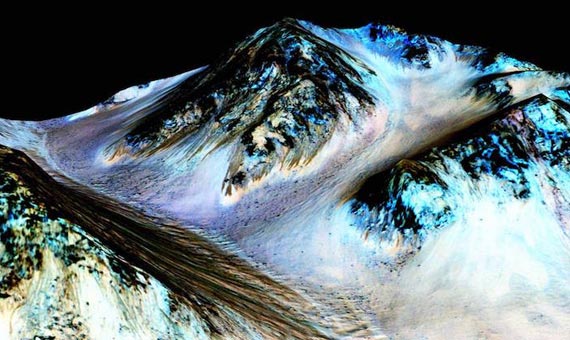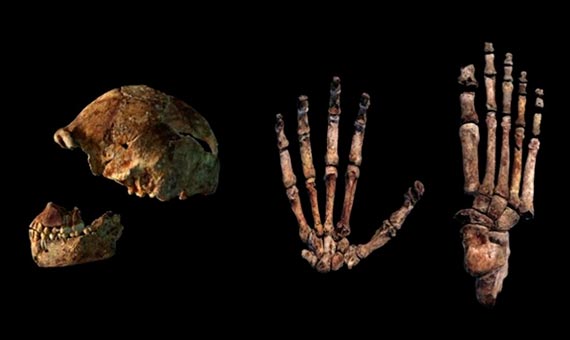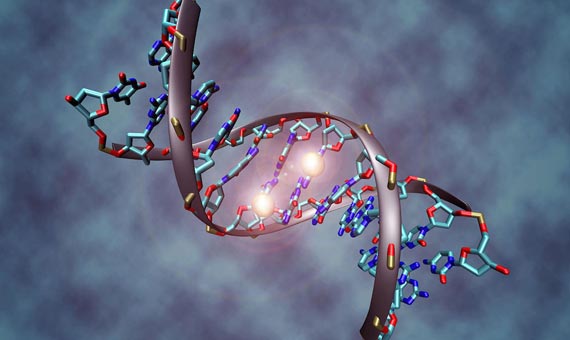2015 was destined to be the year of Pluto, as this was the year that NASA’s New Horizons probe culminated its nine-year voyage, offering us the first high-resolution images of a dwarf planet whose face was unknown to us. However, another scientific breakthrough has emerged as the most important of the year, at least for the journal Science. It is CRISPR, the new technology of genomic editing that has only just been born, but already promises a revolution in genetic engineering. Here we review these and other milestones that science has left us with this past year.
1. CRISPR, the new genetic revolution

In 2012, researchers Emmanuelle Charpentier and Jennifer Doudna transformed a defense mechanism of bacteria into a refined system for cutting and pasting genes at will. The CRISPR-Cas9 system is the DNA editing tool that is spurring a revolution in genetic engineering, thanks to the immense potential of its therapeutic and experimental applications. In April this year, a team of Chinese researchers first attempted the modification of genes in human embryos. It was only a proof of concept that used non-viable embryos, and the results were mediocre, but the pathway opened by this experiment persuaded scientists and other experts to meet this December in Washington to discuss the ethical implications. The final declaration of the meeting advised against limiting CRISPR research, but suggested delaying its application to human embryos destined for reproduction for the time being.
2. Trip to Pluto

After a voyage through space of nine years, NASA’s New Horizons finally had its meeting with Pluto on July 14, where we finally discovered what the surface looks like of what was, until 2006, the last planet of the solar system, today a dwarf planet. New Horizons has revealed for us a reddish world, geologically active and diverse, with icy landscapes composed particularly of hydrocarbons and frozen nitrogen. The probe has also studied the moons of Pluto –Charon, Nix and Hydra– before continuing on a path towards the confines of the solar system, where in 2019 it will encounter an asteroid called 2014 MU69. Another space milestone achieved in 2015 was the arrival of the Dawn mission at the dwarf planet Ceres, the largest object in the asteroid belt between Mars and Jupiter. The images of Ceres show some unusual bright spots that are probably composed of magnesium and sulfate salts.
3. Water flows on Mars

The presence of water on Mars has been a discovery in stages, beginning in 1963 with the detection of water vapor in its atmosphere and continuing with the confirmation of a water footprint in its geology thanks to the Opportunity, Spirit and Curiosity robots. In 2008, the Phoenix mission confirmed the presence of ice, but the possible current existence of liquid water had remained elusive. Finally, in September this year, images from the MRO satellite in orbit around Mars uncovered some gulley marks called Recurring Slope Lineae or RSL, that appear and disappear with the seasons and that, in all probability, correspond to streams of liquid water with a high concentration of salts. Scientists think that this is almost definitive proof, which could be verified by sending the Curiosity robot currently on the surface of Mars, to study the RSL in situ.
4. Einstein was wrong: action at a distance is real

A physics phenomenon called quantum entanglement led to a century of spirited debate among experts. It involves the idea that subatomic particles can be to some extent synchronized with respect to some of their properties, such that one particle responds to changes in the other, even if they are some kilometers away. Albert Einstein did not believe in action at a distance, since it would imply faster than light communication between particles. However, over time several experiments have confirmed that the phenomenon is probably genuine, although physicists were still pointing out possible holes in the design that would cause measurement errors. In October, a new experiment conducted by researcher Ronald Hanson at the University of Delft (Netherlands) managed to plug these holes, in what for many is the definitive physical proof that there is action at a distance, and therefore Einstein was wrong.
5. Alien engineering? Probably not

It was undoubtedly the most talked about scientific story of the year, but its outcome is probably not what is hoped for. On October 13, an article in The Atlantic magazine set the Internet on fire by suggesting a strange star could show signs of alien technology. It was KIC 8462852, a star 1,480 light years from Earth, which showed an unusual brightness pattern never before observed – something was periodically blocking its light, which led some experts to suggest that it could be a mega-structure of engineering built by alien civilizations to harvest energy. Meanwhile, the researchers behind the discovery pointed to the possibility that the light attenuation is due to a swarm of comet fragments. Radio telescopes at the SETI Institute (Search for Extraterrestrial Intelligence) scanned the system for signals, but without success. The explanation of the comets remains the most likely.
6. Welcome to the family, Homo Naledi

In September, a new relative came to join the human family, the result of the exploration of an inaccessible underground cave by a team of researchers led by Lee Berger of the University of Witwatersrand, Johannesburg (South Africa). Homo Naledi is a strange hominin, with a small brain and a mixture of primitive features, similar to Australopithecus, compared to others more like those of species of its genus. Even more puzzling than the South African hominin is another potential member of our genus found in Ethiopia, which would move back the appearance of the first Homo to 2.8 million years ago. But even older are the first stone tools; the discovery of the remains of lithic technology in a 3.3 million year old site in northern Kenya suggests that our race was not the first to use these instruments, and its oldest samples are contemporaneous with Australopithecus, the group to which the fossil Lucy belongs.
7. The LHC, at full steam

The discovery in July 2012 of the Higgs boson, a subatomic particle theorized for decades by the Standard Model of physics, crowned one of the most ambitious scientific projects in history. The discovery justified the investment of three billion euros in the construction of the Large Hadron Collider (LHC), but the 27- kilometre long ring stretching between Switzerland and France has far from exhausted its scientific potential. In March, after two years of rest and maintenance, the LHC was once again switched on to generate collisions at 13 teraelectronvolts, an energy level never before reached in a particle accelerator. So far the new round of operations has already revealed the existence of a particle consisting of five quarks, or pentaquark. In December, LHC physicists detected a possible mysterious particle six times heavier than the Higgs particle, although the results are preliminary and will have to be confirmed in 2016.
8. Historic agreement against climate change

The growing concern about the effects that climate change will bring throughout this century has finally brought the issue to the political agenda of most countries. After years without significant progress, on December 12 the twenty-first session of the Conference of the Parties (COP21) ended in Paris with a binding agreement signed by 195 states, establishing a goal of keeping global temperature increase well below 2°C compared to pre-industrial levels, and an aspiration to limit this warming to 1.5°C. The signatory countries will tackle the reduction of greenhouse gas emissions and how to replace fossil fuels with renewable energy sources. Richer nations will help defray the costs for developing countries with amounts above 100 billion dollars a year. Meanwhile, the World Meteorological Organization has warned that 2015 is shaping up to be the warmest year in the history of the climate records.
9. Weapons against Ebola

The epidemic of the Ebola virus that emerged in West Africa in December 2013, and which became a matter of great concern in much of the world in 2014, seems to be coming to an end. At the time of writing this article, and if no new cases of the disease arise, the World Health Organization will declare the end of the outbreak in Guinea on December 29, and in Liberia on January 15, 2016. This would bring to a close the most serious epidemic of the disease, which has left more than 11,000 dead and has threatened the health system’s security in countries like the USA, the UK, Italy and Spain. In 2015, efforts in the fight against this virus have borne fruit with several candidate vaccines that could prevent new outbreaks in the future. The two that are at the most advanced stages, rVSV-ZEBOV from Merch and NewLink Genetics and ChAd3-ZEBOV from GlaxoSmithKline, have already been tested on the ground in Africa, and could begin to be adopted in 2016.
10. After the genome, the epigenome

When the Human Genome Project was terminated in April 2003, it seemed that the book of life of our species had practically been written, and that in the future the work would focus on deciphering. However, something foreshadowed that this would not be so. Since the beginning of this century, biologists have begun to discover that certain chemical modifications of DNA are able to widely control the activity of genes in cells, and that they are also inheritable. In other words, to understand the functions of genes and their implications for diseases like cancer or Alzheimer’s, it is not enough to understand the genome – we must also study the epigenome, the map of these chemical modifications. In February, a large international consortium of researchers joined in the Roadmap Epigenomics Project published more than 20 studies that detailed the epigenomic map of 111 human cell types, the most complete ever achieved.
Comments on this publication